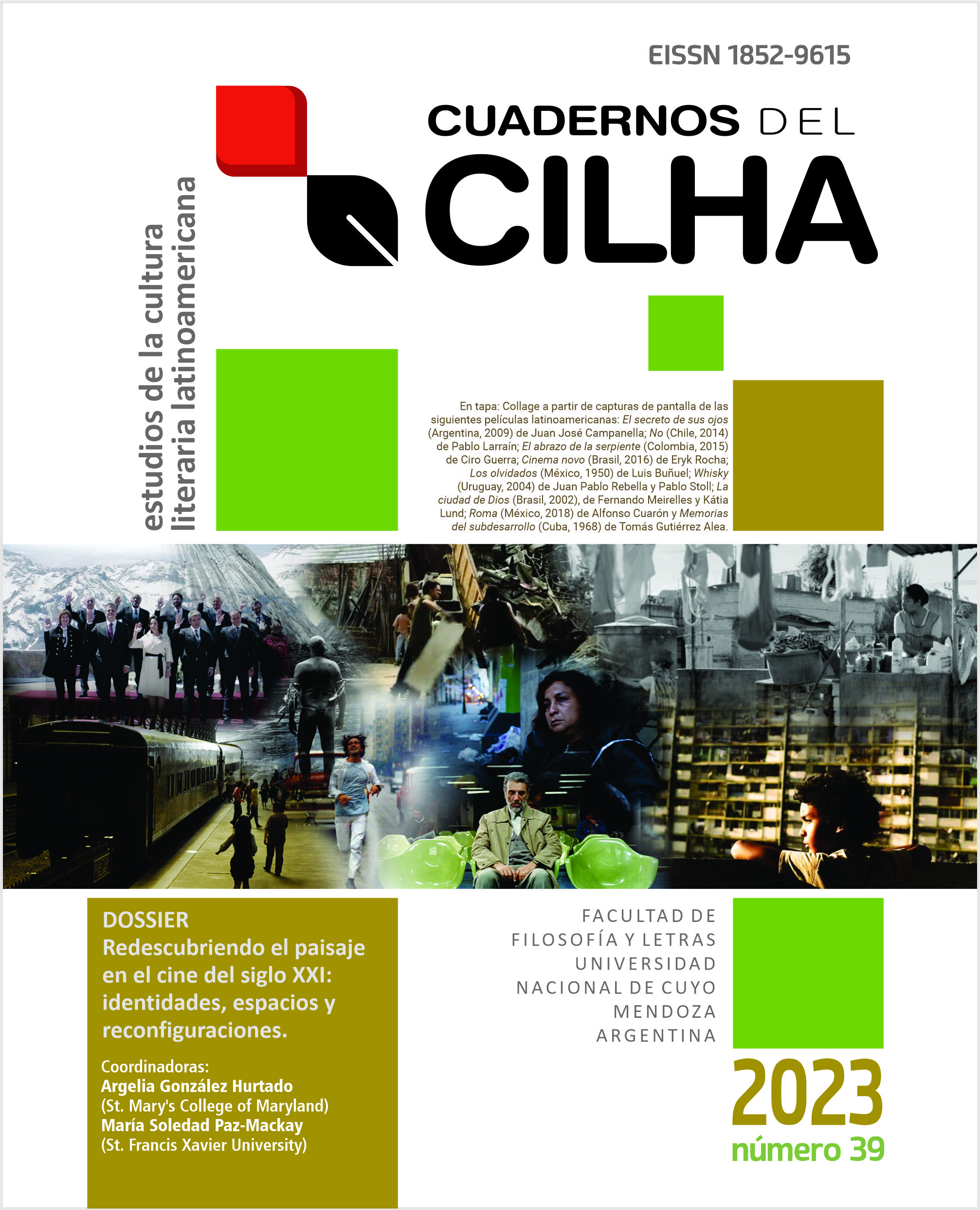Muerte y paisaje en La distancia más larga (2013)
DOI:
https://doi.org/10.48162/rev.34.066Palabras clave:
paisaje, muerte, cine latinoamericanoResumen
En La distancia más larga (2013), opera prima de la directora venezolana Claudia Pinto Emperador, la muerte une los espacios naturales con los espacios urbanos. Lucas, un niño de doce años, huye de Caracas después de que su madre es violentamente asesinada. El objetivo del niño es llegar a la Gran Sabana, una inmensa zona despojada de árboles del Amazonas venezolano donde se encuentra el famoso monte Roraima. Al mismo tiempo, la abuela de Lucas regresa a Venezuela con una enfermedad terminal con la intensión de morir en el Roraima, un paraje donde fue feliz en su juventud. Construida a primera vista como una película de carretera, la película presenta Caracas solo como escenario donde se desarrolla la acción. A medida que Lucas se adentra en su viaje hacia el Amazonas, el entorno se va separando de su rol de trasfondo de las acciones para convertirse en paisaje cinematográfico. Aquí paisaje implica una manera específica de registrar el entorno natural como un elemento independiente de la narración que pasa a dominar las acciones de los personajes, en ocasiones deteniendo la narración por completo en otras ralentizándola, siempre focalizando la atención en algún aspecto afectivo. Mientras que la herramienta técnica normalmente usada para presentar paisajes es el plano largo, este trabajo explora como Pinto Emperador prefiere utilizar la edición para formular un contrapunto de imágenes entre la ciudad y la Gran Sabana que permite incorporar la muerte tanto en su dimensión destructiva como creadora.
Citas
Borges, J. L. (1974). Los dos reyes y los dos laberintos. En Obras completas. Emecé.
Cohan, S. y Hark, I. R. (Eds.). (1997). The road movie book. Routledge.
Corrigan, T. (1994). A cinema without walls. Rutgers University Press.
Garibotto, V. y Pérez, J. (2016). Introduction. En V. Garibotto y J. Pérez (Eds.), The Latin American road movie (pp. 1-28). Palgrave Macmillan.
Harper, G. y Rayner J. (2010). Introduction. En G. Harper y J. Rayner (Eds), Cinema and landscape: Film, nation, and cultural geography (pp. 13-28). Intellect.
Laderman, D. (2002). Driving visions: Exploring the road movie. University of Texas Press.
Lefebvre, M. (2006). Between setting and landscape in cinema. En M. Lefebvre (Ed.), Landscape and film (pp. 19-59). Routledge.
Lefebvre, M. (2011). On Landscape in narrative cinema. Canadian Journal of Film, 20(1), Spring, 61-78.
Lie, N. (2017). The Latin American (counter-) road movie and ambivalent modernity. Palgrave Macmillan.
Lopez, D. (1993). Films by genre. 775 Categories, Styles, Trends and Movements Defined, With a Filmography for Each. Mcfarland Publishers.
Pinto Emperador, C. (Directora). (2013). La distancia más larga [Película]. SinRodeos Films.
Ranger, P. (2013). Compte rendu de [Amérique latine: stupeur et tremblements/ La distancia más larga, Venezuela/ Espagne/ Workers, Mexique/ Allemagne/ Azul y no tan rosa, Venezuela/ Espagne]. Séquences, (287), 22-23.
Rondón, M. (Directora). (2013). Pelo malo [Película]. Sudaca Films.
Salles, W. (Director). (2004) Diarios de motocicleta [Película]. FilmFour.
Sargeant, J. y Watson, S. (Eds.). (1999). Lost highways: An illustrated history of road movies. Creation.
Scott, R. (Director). (1991). Thelma & Lousie [Película]. MGM.












































